Aerial photography using drones has become quite popular in recent years and so has the technique of light painting in photography.
Aerial photography lets the photographer show frames from a totally different perspective and light painting lets the photographer portray their creativity by painting with light on a scene to add meaning, story, and concept to an image.
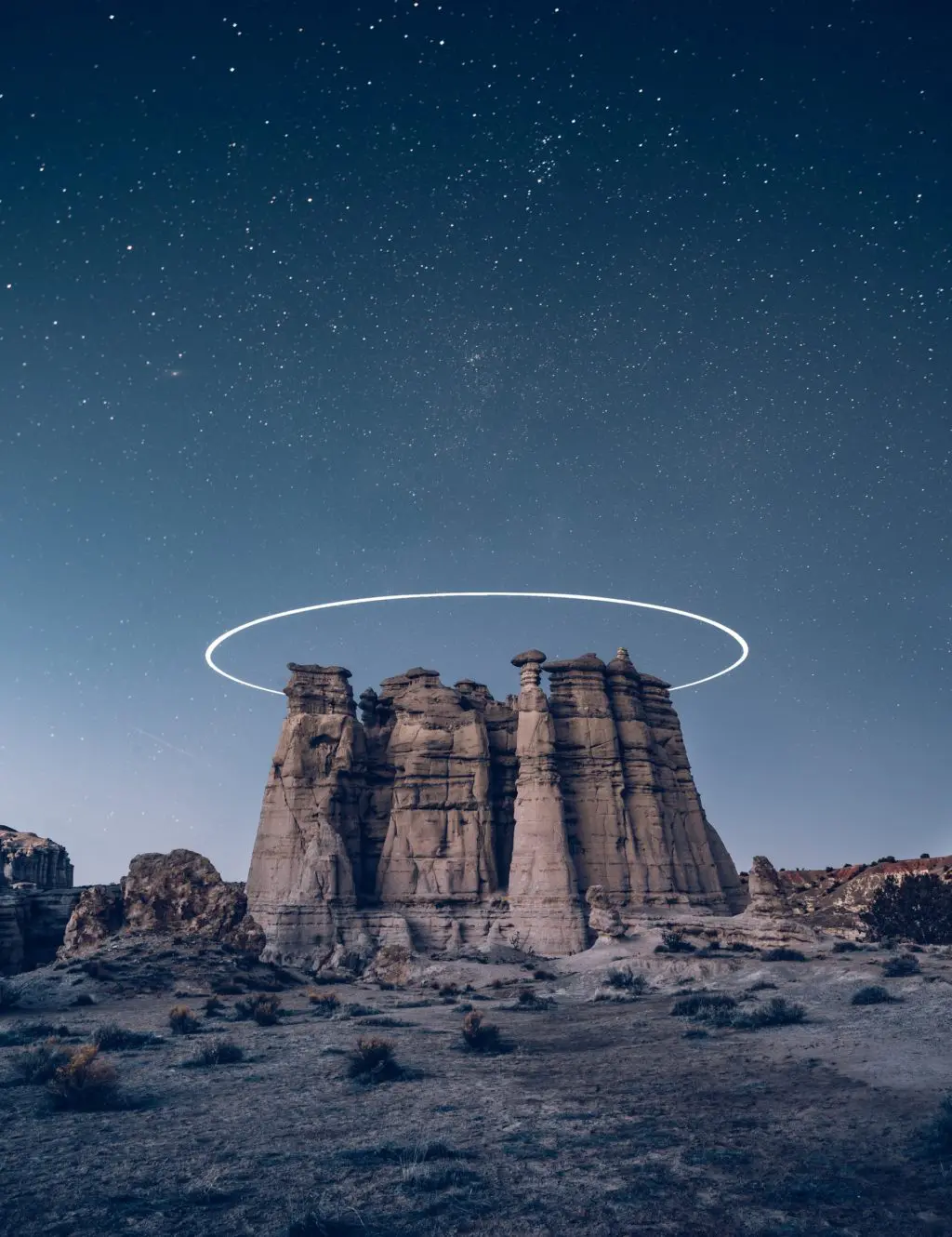
While light painting with various accessories is a common technique these days, using drones to light paint landscapes is taking creativity up one level and in this article, we will look at how to light paint landscapes at night using a drone.
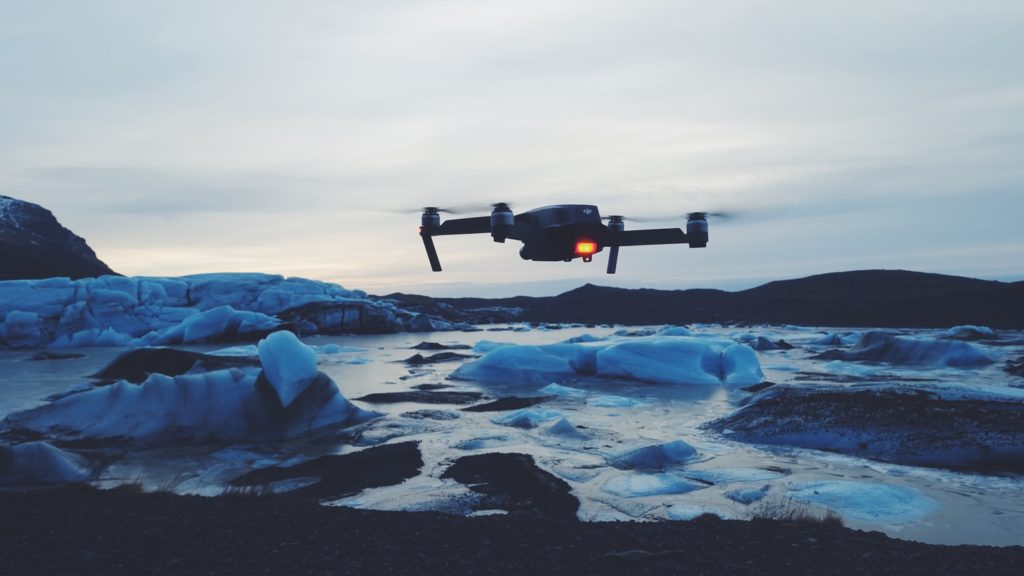
Note: Images here are for illustration purpose only as we are not sure what source of light was used to paint the landscape. You can use the drone to light paint landscapes as shown here or use this as a reference so you get an idea of what can be done.
Drone light painting is a combination of traditional light painting and drone where the light source is attached to a drone. This way the landscapes or locations that you visit can be photographed in a totally different way.
What Is The Concept Involved In Drone Light-Painting
The basic concept here is, instead of doing the light painting by hand as you would normally do for traditional light painting photography, you attach the light painting accessory or source to the drone and then fly the drone along the path you would require the painting to be done or use the light source to illuminate the landscape by painting it with light. It may sound simple, but could be quite complicated and will need a lot of practice to create interesting light painted images.
An advantage of light painting landscapes at night is, you do not have to wait for natural light or the perfect light to illuminate your landscapes, but rather use your own light source to illuminate your subject that is the landscape, just like how you would control light in a studio environment. With landscapes in remote and dark environments, this would help create surrealistic images where you can paint these places with new types of lighting techniques, so people feel get a different feel and view of landscapes than what they are used to seeing in the day time.
Light painting landscapes at night can be done in two ways.
- Paint or illuminate the landscape with a source of light that the drone will carry
- Capture a long exposure landscape image at night where you will fly a drone with a point source of light or another strip of lights to draw a pattern in the sky.
Let us now look into a few factors for light painting landscapes at night using a drone.
There are certain things you need to be aware of and take into consideration for drone photography and here is what you need to do for successfully light painting a landscape at night using a drone.
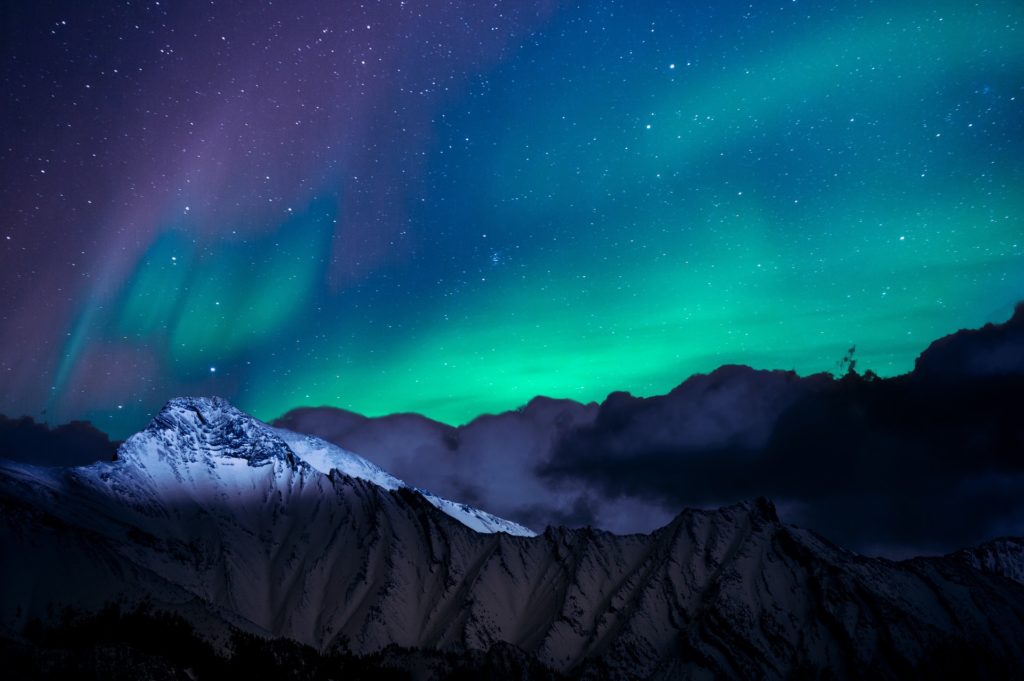
Note: Some photographers who are into serious light painting using their drone, personalise their drones with various accessories. But here we are just focusing on using the drones with light accessories for drones that can help with light painting.
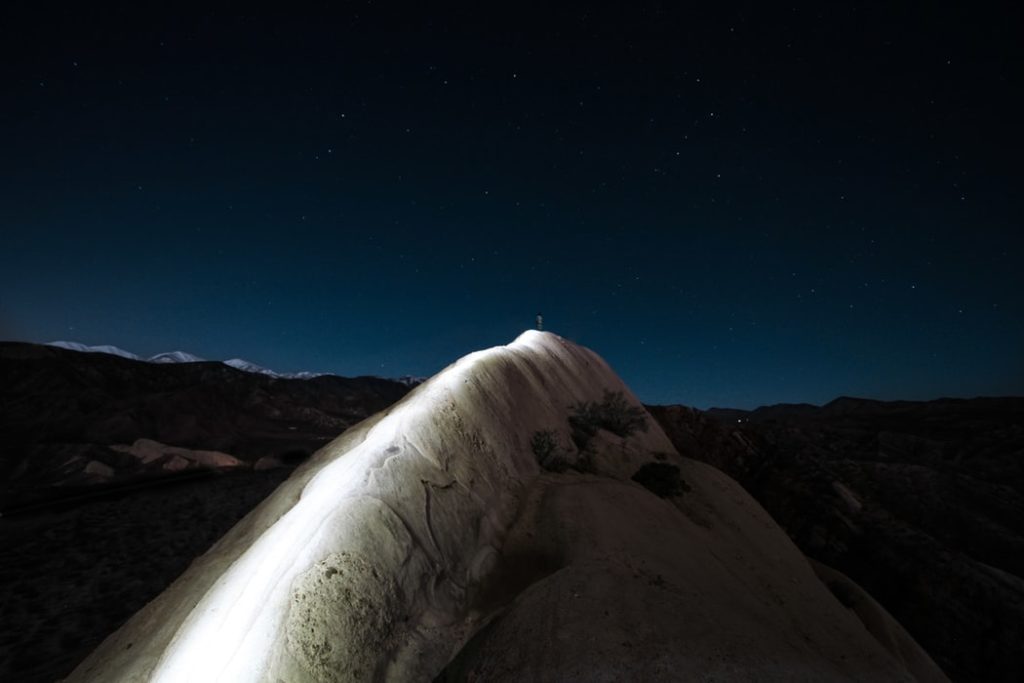
Choosing Locations For Light Painting Landscapes Using A Drone
When choosing landscape locations to light paint at night you need to be selective in what you choose. It all depends on what you want to achieve with the light painting. Very similar to light painting techniques we use otherwise, you could either draw patterns using the light or you can light paint surfaces.
If you are looking to draw patterns, then any dark location should be just fine. You will just need to set your camera up for long exposure photography and draw the pattern with the drone. The path of the drone is recorded as the pattern in the image.
When it comes to light painting structures, all landscapes would not benefit from light painting techniques at night. You will need to be on the look out for rocky areas especially ones that have beautiful textures and colours so that you can show depth and vibrance in your images when light painting them.
Look for beautiful rock structures, like canyons, or if you live in cold regions, look for icy structures like glaciers, icebergs, etc., so they can be illuminated beautifully with the light. Look for layers of structures so that the foreground structure is more illuminated than the one behind it thereby showing depth, drama, and surrealism in your images.
Note: With the charges on the batteries of drones and lights being very limited, you will not have much time for trials on painting and compositions when you are on location. You will need to plan these well ahead of time.
Drone Lights
With drone lights making a huge entry into the market, photographers can now use these lights to create tricky photographs using their drone and the lights. These lights are lightweight so that they do not heavily impact the flight or flight time of the drone and are manufactured for each size drone. The most popular ones are for the DJI Phantom, DJI Mavic Pro and Air, GoPro Karma and Autel X-Star. There are even drone lights for smaller drones like the DJI Spark.
The drone lights come in two varieties – constant light functionality and speed light functionality similar to the ones for strobe lights. This way, you can use drone lights to paint a scene or illuminate a dark object in the night or light paint shapes, objects, patterns in the sky.
Most of these drone lights are controlled via USB or an app so you can adjust the brightness or other settings, they come with their own batteries and do not take power from the drone’s battery.
Moreover, if you are using a heavier high-end drone, you can even mount something like a pixelstick to program and draw patterns in the night sky when photographing the night landscape.
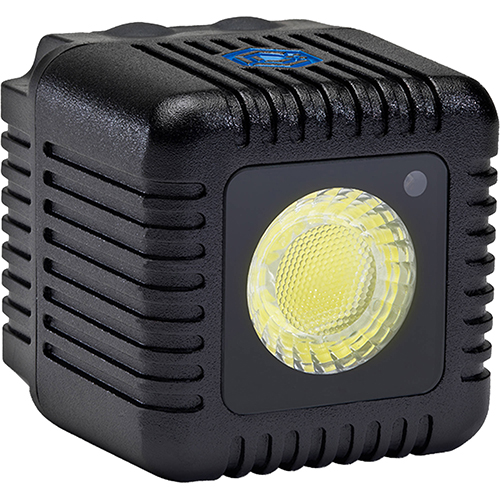
Gear Required:
- A camera that can shoot in manual mode
- A sturdy tripod
- Remote trigger for shutter release
- A drone capable of carrying the light that you are planning to use for light painting the landscape.
- Drone lights for light painting. For example, the Lume Cube, the Fiilex AL250 aerial light, Polar Pro LED lights for drones or anything that your drone is capable of carrying while flying (drone lights are available for almost all sizes of drones like DJI spark, DJI Mavic air, DJI Mavic Pro, DJI Phantom, etc.)
Some Useful Apps To Help With Light Painting Using A Drone:
Since you need to be careful about safety and security concerns, unless you’re 100% sure, it is also good to use apps that let you check for information on locations safe to fly a drone, so that you do not get into trouble using the drone.
- Airmap for iOS and Android – aeronautical data & services to unmanned aircraft, or drones
- Hover for iOS and Android – this app tells you if it’s safe to fly in your current location
- B4Ufly for iOS and Android – if you live in the US the FAA has produced this app to make it super simple to know where in the US you can and can’t fly your drone
- Litchi for iOS and Android – use the Litchi app for DJI drones and it can help to create patterns in the sky. This app has various flight modes that include Panorama, Orbit me, Follow me, Ground station and Waypoints, VR Mode and Focus. This app helps the drone follow a pre-programmed path perfectly
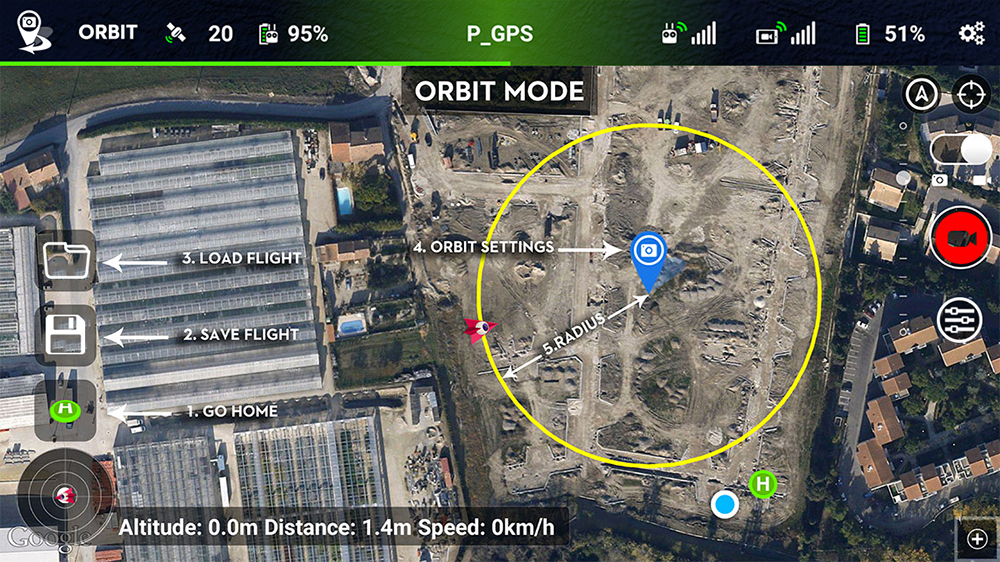
Camera Settings:
- Put the camera on manual mode and set it to bulb mode.
- The shutter speed you will want to use depends on the desired amount of light painting and the complexity of the painting itself. Shutter speed usually has to be a few seconds and depending on how much painting you want to capture you can adjust the shutter speed. Each painting will require different shutter speeds and you can manually control it using a cable release.
- Use the lowest ISO possible (typically 100 or 200)
- Use an aperture narrow enough (f/8 to f/16) to get everything in the frame in focus as you are shooting a landscape. A narrow aperture also helps with eliminating blown out highlights and unwanted artifacts.
Setup For Light Painting Night Landscapes Using A Drone:
- Put your camera on a tripod and manually focus to get the entire scene in focus.
- Remove any filters from the lens to avoid flare.
- Use the mirror lock-up feature (only for DSLRs) and use the remote shutter release to manually control shutter speed and to avoid camera shake.
- Now fly the drone with the light source attached to it.
- You may be using a pattern or maybe flying the drone near rocks or mountains or glaciers to light paint their surfaces. You can use a single light source or several light sources
- Now when you start painting, with your scene framed and settings dialed in, release the shutter and depending on what you wish to paint, you may have to manually move the drone or the drone will follow a pattern if it is already pre-programmed.
- Once the painting is done, do not forget to close the shutter if you are controlling it manually using a trigger.
- Play around with the settings, if you do not get it right on the first attempt. Also take into account the battery back up for the drone, so practice well before you do the final light painting process.
- Experiment with your painting technique.
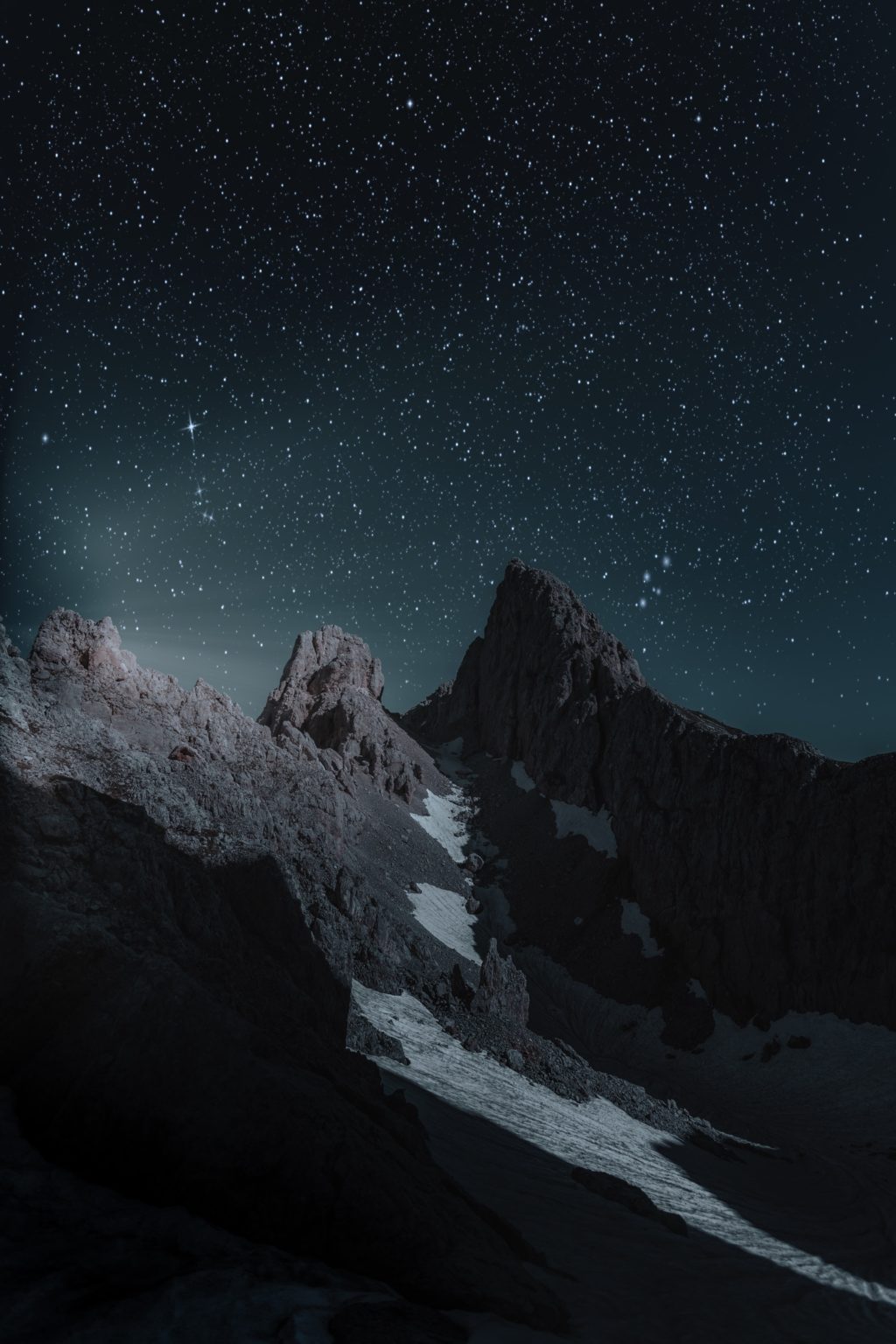
Other Tips For Light Painting Using A Drone:
- Do serious location scouting and choose a landscape that is suitable for the photograph you have visualized on creating.
- Begin with a simple light painting scene, and once you become more comfortable with the process and settings, move on to more complex works.
- Watch out for the moon phases and also the direction at which light will fall on the surface you will be light painting. You can use a combination of moonlight and drone lights when you are painting patterns in the sky (moonlight to illuminate landscape and drone light to paint patterns in the sky) or use the drone lights to fill in light in areas where light is less or not available.
- While choosing patterns, choose patterns that will add meaning to the landscape, rather than paint anything irrelevant, and this will help create a compelling image.
- Before you start with anything, always check to see if you are allowed to fly a drone in the area you wish to shoot.
- Even in the fly zones, make sure that there are no other air vehicles like helicopters flying around or are used to flying around.
- Flying drones at night can be quite dangerous. So make sure that you are maintaining safe distances from private properties and always keep the drone in your sight and never away.
- Attach something like a pixelstick and fly the drone horizontally in an inclined path or vertically, whatever way you can and create a creative light painting in the sky over a light painted landscape.
If you have experience light painting landscapes at night using a drone, feel free to share your experience and any tips in the comments section below. You can also share your images with our community here in the General Photo Chit Chat Forum or Landscape Photography Forum.
Further Resources:
- Not Your Typical Drone Photography: Light Painting Landscapes with Reuben Wu
- A Rare Tropical Glacier Captured at Night in Drone-Illuminated Photographs by Reuben Wu
- Drone light painting using waypoints and Litchi
- 7 Factors To Consider When Flying Your Quadcopter For Aerial Photography
- Aerial Photography: The Definitive Guide To Amazing Aerial Shots
- A Guide to Aerial Photography (With Some Stunning Examples)
Further Learning:
If this article has piqued your interest in light painting, then take a look at The Secrets Of Light Painting Pack. This guide will teach you what you need to know about light painting. You not only get a comprehensive guide that teaches you all the techniques, camera settings and gear that you'll need to capture your creative vision, but you'll also get 18 downloadable cards that you can take with you. Yep, you can stop reading and get out there and just do it – actually this really is the best way to learn.
Take a look at The Secrets Of Light Painting today.
Shareable Images for Pinterest
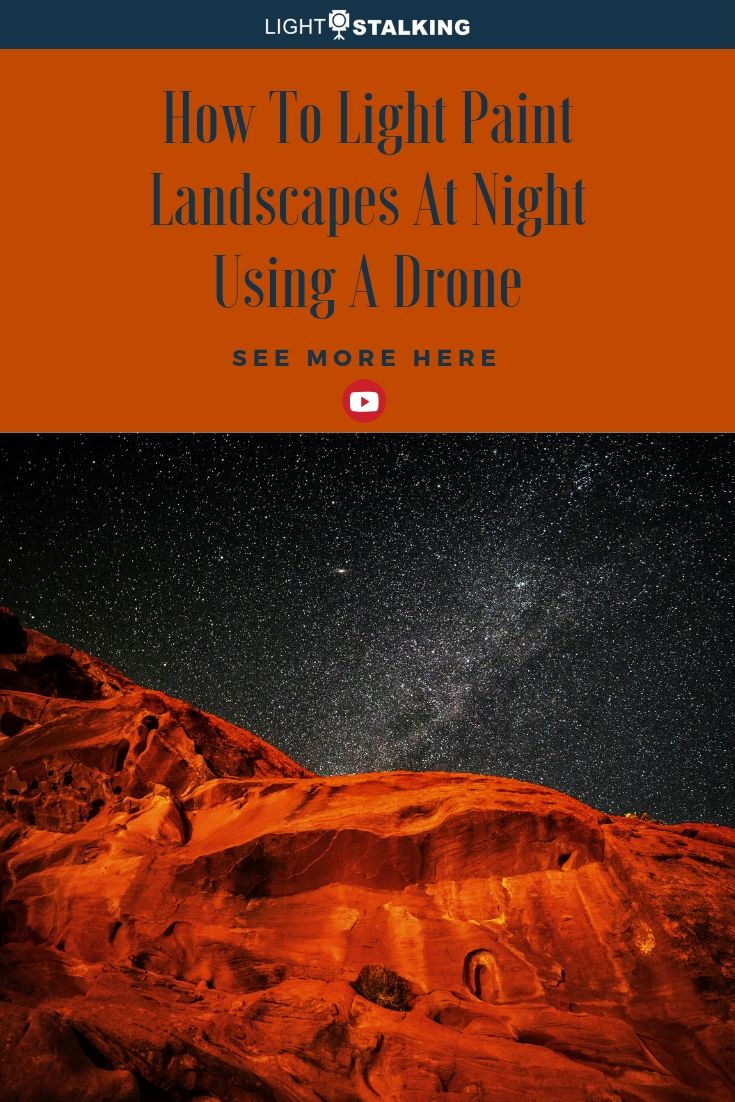
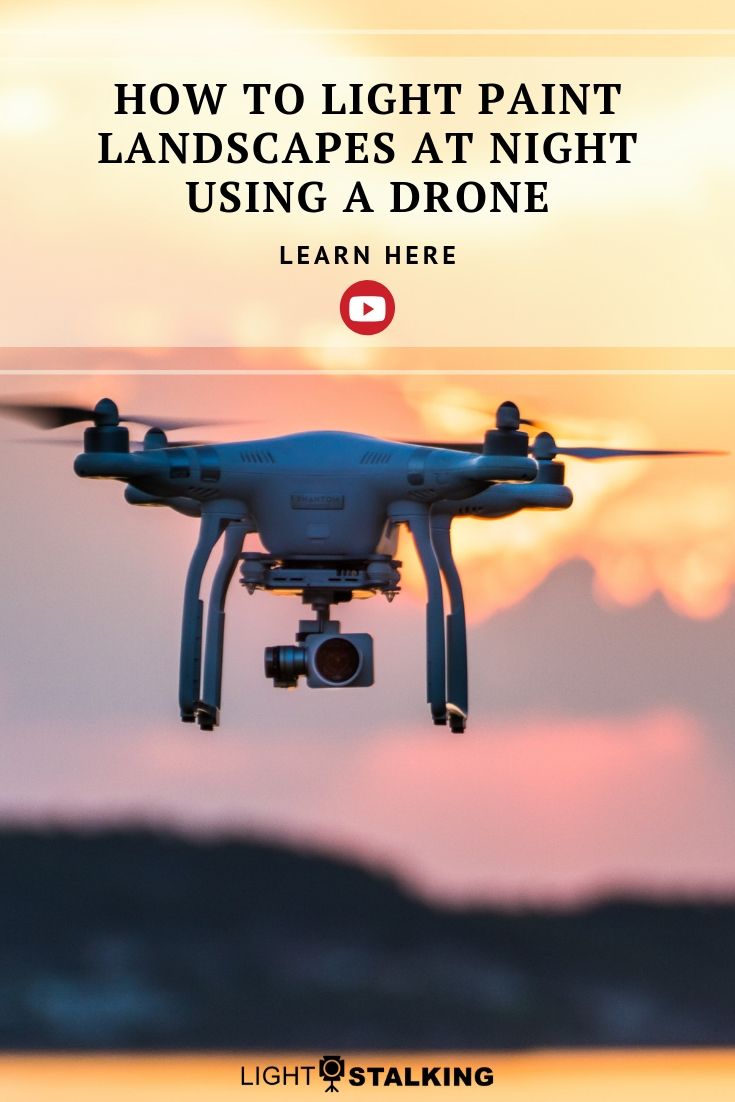
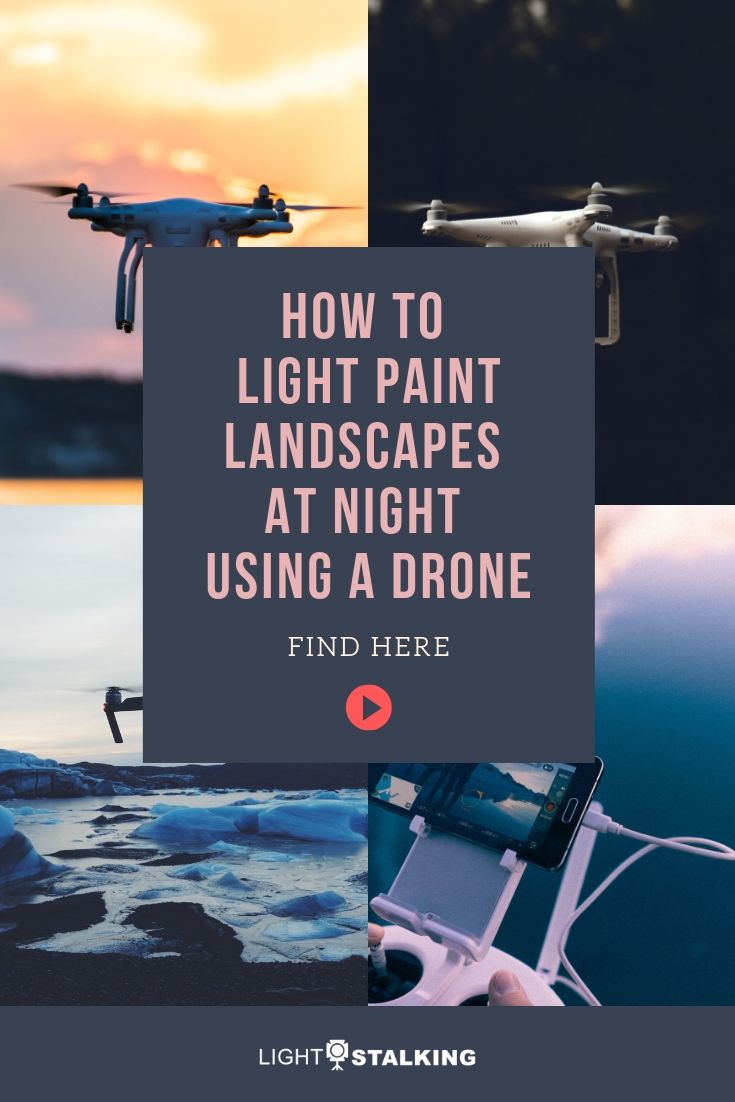
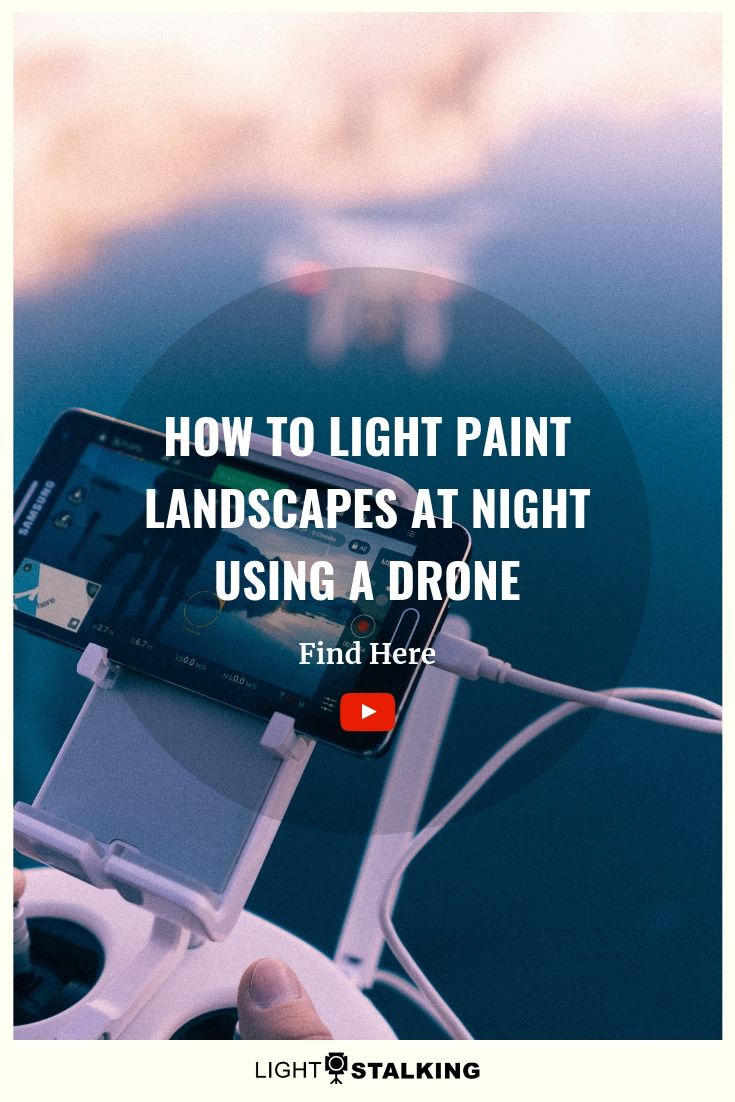
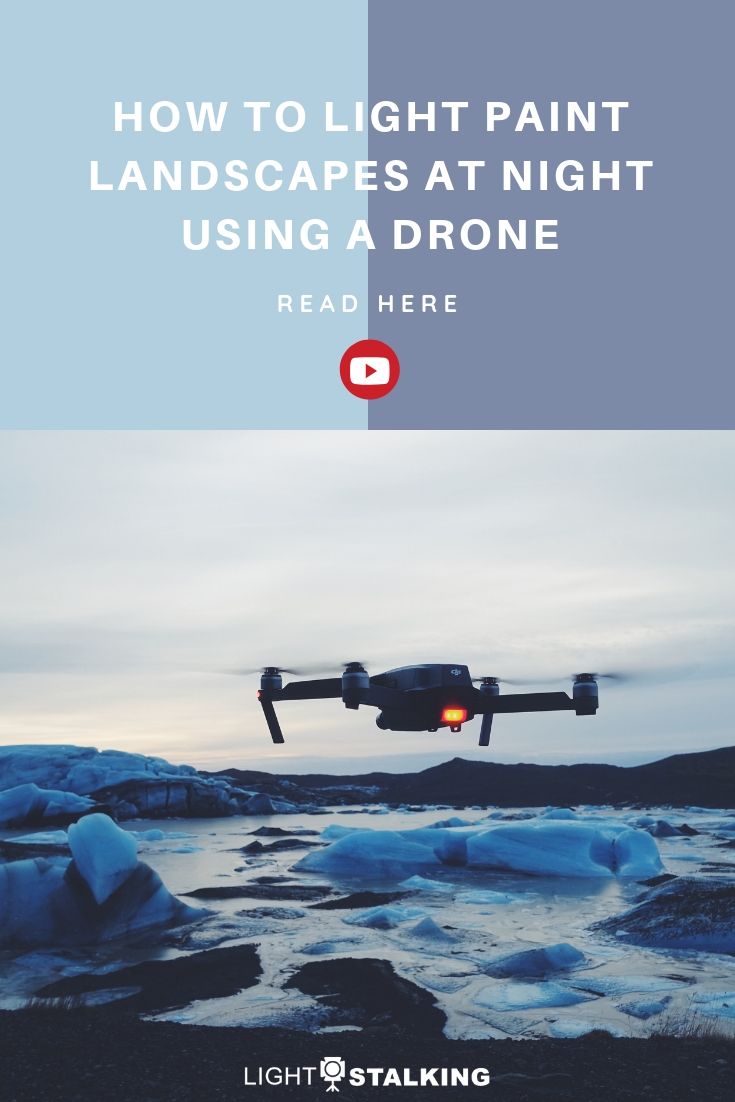
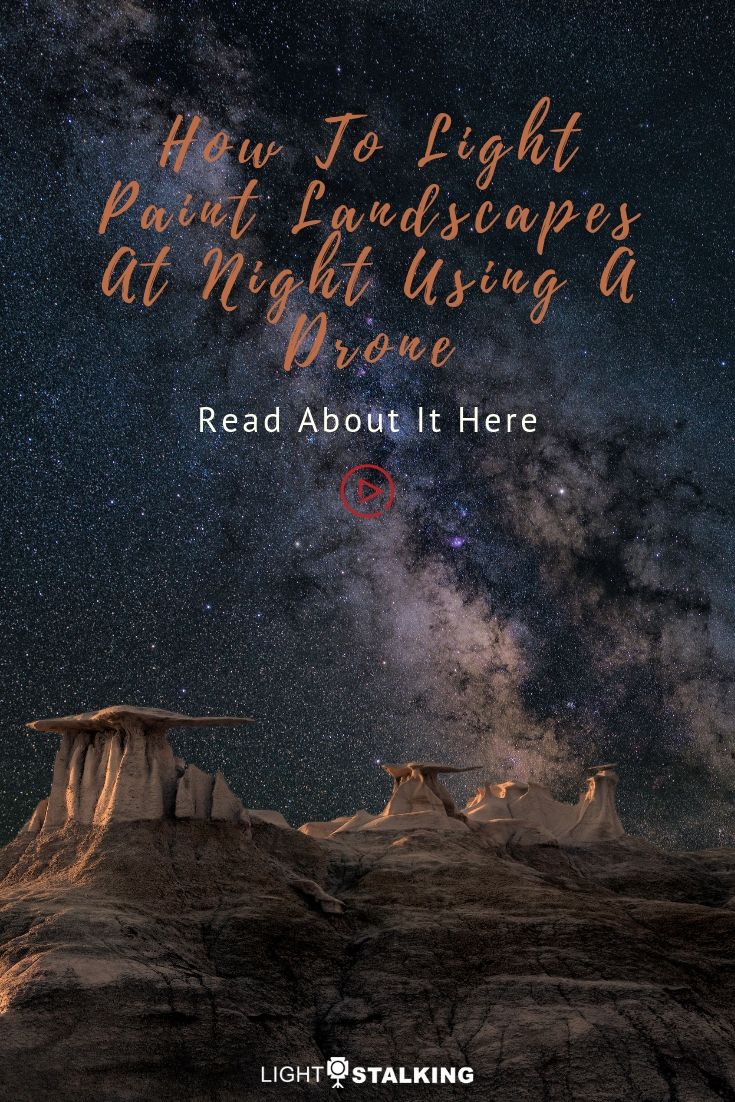



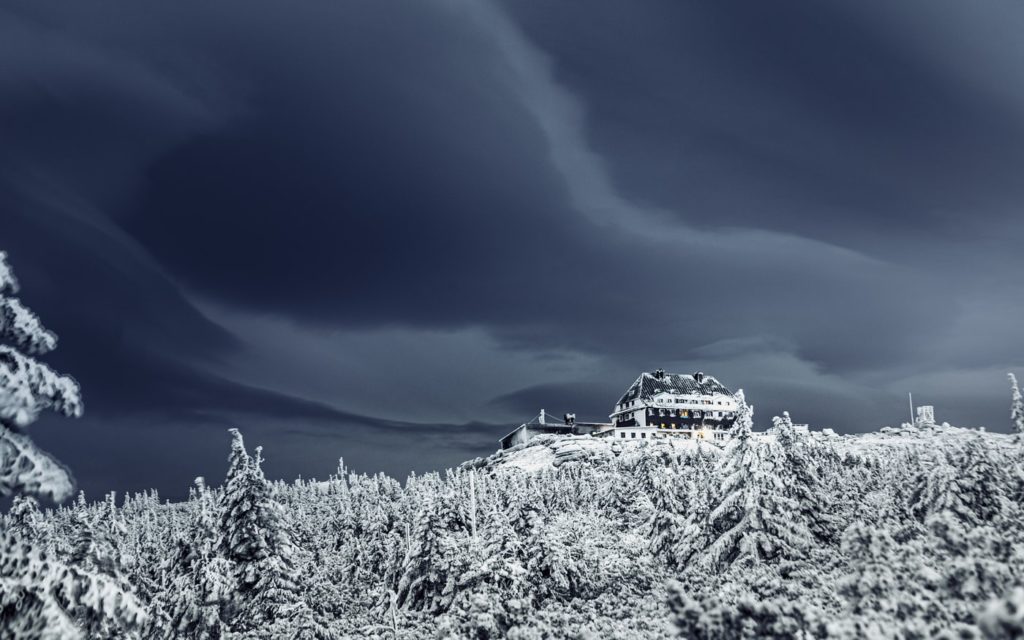

2 Comments
If flying is the United states there is one other requirement, a waiver to fly at night.
FAA regulations prohibit flying beyond a half hour past twilight.
Plus if the waiver is approved, a mandatory beacon light is required. That may compromise any desired effect, or enhance it.
Thank you for this information Robert 🙂